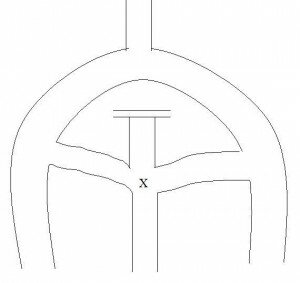In a school yard somewhere, a little boy is offered a $1 coin and a smaller $2 coin by some other kids. He is told that he can pick a coin and keep it. He picks the larger $1 coin. The other kids think him silly and gullible for not knowing that the smaller coin is worth double the larger. Thus whenever the kids want to make a fool of the little boy they offer him the usual choice of coins. He always takes the larger $1 coin and never seems to learn.
One day a teacher sees this transaction and takes the little boy aside and points out that the smaller coin is actually worth double the larger coin — even though it may seem otherwise.
The little boy listens politely then says, “Yes, I know that. But how often would they have offered me the choice if I had taken the $2 coin the first time?”
If a computer modeling program or mathematical equation was developed for this scenario it would take the $2 coin the first time. It’s the boy’s perception that allows him to take a broader view and consider possibilities of repeat business and risk such as how many times the schoolyard mates would offer coins and lose the $1 coins.
This is the difference between a computer/equation and a human — the computer program is given its perceptions and processes them; the human mind forms perceptions by choosing to look at the world in a particular way.
For example, let’s look at a map.
 We are at point “X” and want to go north. The obvious and logical route seems to be continuing north. All information available to us suggests this is the correct route.
We are at point “X” and want to go north. The obvious and logical route seems to be continuing north. All information available to us suggests this is the correct route.
Now, however, if we look at the smaller map as part of the larger map.
 We see that the route going north is actually a dead-end. The east and west route connect to a ring road that gets us where we want to go.
We see that the route going north is actually a dead-end. The east and west route connect to a ring road that gets us where we want to go.
Obviously, the first decision was made without the full information and we made a perfectly logical choice with the information at hand.
It is the same with perception. If we have limited perception then we can make a perfectly logical choice consistent with that limited perception.
Edward de Bono calls this a “logic bubble” (in his book Serious Creativity: Using the power of lateral thinking to create new ideas) — a personal bubble of perceptions wherein each person acts in completely logical fashion. The logic is right, but the perceptions are limited or outright faulty — the resulting decisions and action are inappropriate. Different logic bubbles give rise to different behavior and conflicts, yet each party is behaving quite sensibly within that party’s logic bubble.
If we think of “X” on the map as representing Maximum Sustainable Yield — the fisheries and salmon management equation and computer programming that suggests it is a good thing to take 80% of a salmon run for decades and expect 20% to reproduce the same size run in perpetuity.
The equations and computer programs that “manage” with limited perception of a single species.
The equations and computer programs that took the $2 coin right off the top and expected the school kids to offer $2 coins every day in perpetuity.
Edward de Bono:
… Most of the mistakes in thinking are inadequacies in perception rather than mistakes of logic. The astonishing thing is that traditionally we have always put the emphasis on logic rather than perception. We have felt uncomfortable with the fluidities and “possibilities” of perception and have taken refuge in the apparent certainties and “truth” of logic.
This has served us well when the input is as definite as a measurement or a number but much less well in those areas where excellence of processing cannot make up for the inadequacies of perception.
With perception we do not see the world as it is but as we perceive it. The patterns of perception have been built up by a particular time sequence of experience. We perceive the world in terms of the established patterns that are triggered by what is now in front of us.
What’s in front of us — as I humbly perceive it — is a failure of fisheries “management” over the last several decades. There’s a reason why fish populations around the world are in deep shit. Too many mathematical equations and computer models — too much single species perception; not enough ecosystem perception.
Not to mention the impossibility of accurately estimating the size of a fish population in the first place, to then base “precise” calculations and models on. It’s all estimation – so let’s just call it that.
Processing numbers is not the issue, that’s been done well, to precision actually. It’s faulty logic — a logic bubble on par with the one that thought sub-prime mortgages were a good idea, or handing out “zero down” mortgages to people who should not qualify for a mortgage in the first place.
The same logic bubble that has people saying “gee, we don’t know what happened it must be poor ocean conditions…”
Big changes; bubbles are bursting — especially when Vancouver salmon markets are having to import salmon from Russia, and “ecocertifications” are being handed out to collapsed fisheries (i.e. Fraser River sockeye, Yukon River chinook), and Wal-Mart enters the market to sell salmon as cheap as possible.
